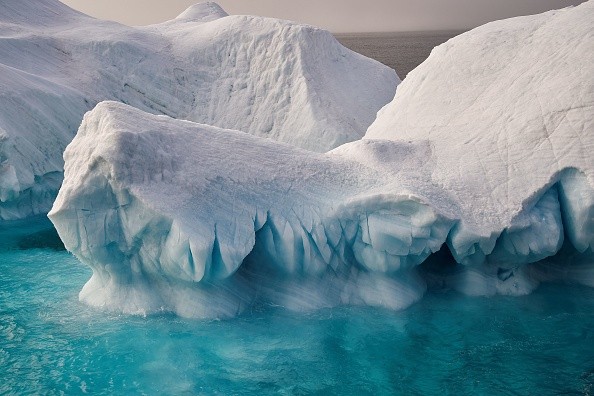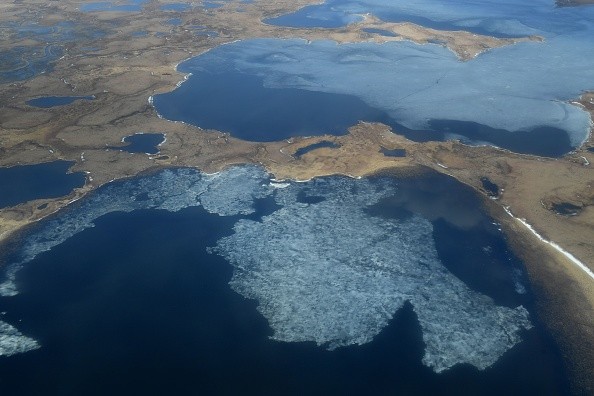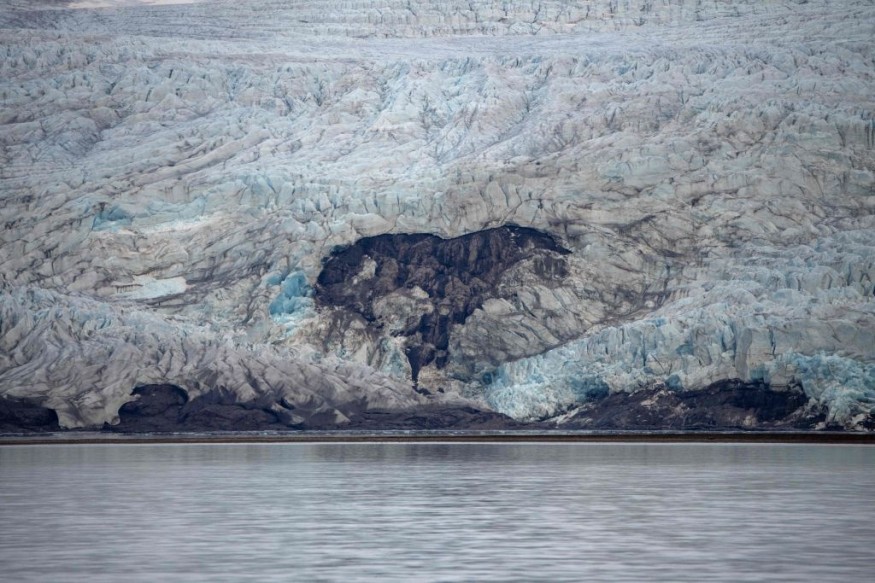Massive craters measuring 90 feet in depth have emerged on the Arctic Ocean's bottom. According to geologists, the craters are forming as subsurface permafrost thaws on the border of the Beaufort Sea in northern Canada, with retreating glaciers from the last ice age driving the shift.

Melting Permafrost
Permafrost is ground that has been frozen for a long time, perhaps hundreds of thousands of years. Permafrost is thawing in the Arctic, warming faster than any other part of the planet, causing the ground to become unstable.
As the soil thaws, organic matter trapped within begins to decompose, releasing methane and other greenhouse gases into the atmosphere. Pressure rises when these gases are discharged.
On land, the effect is palpable. Footage from Siberia shows the terrain swaying "like jelly" beneath people's feet.
When the pressure builds to a critical level, the ground bursts, leaving enormous craters in its wake. One witness described the experience as "as if the earth was breathing."
However, what occurs when permafrost on the ocean's bottom thaws is less apparent.
Boiling with Methane

Scientists in Siberia found a region of water that was "boiling" with methane, with concentrations seven times greater than the world average, in 2019.
A different team of experts discovered evidence of massive craters on the seabed of the Barents Sea, north of Norway and Russia, two years ago. They claimed that the holes were generated thousands of years ago due to methane explosions.
Advance Study Technique
Researchers led by Charles K. Paull, a senior scientist at California's Monterey Bay Aquarium Research Institute, employed advanced mapping equipment to study changes to the seabed for a decade better to understand the impact of thawing permafrost under the ocean.
Between 2010 and 2019, they performed surveys in the Beaufort Sea to document topographical changes caused by melting permafrost.
According to the findings, huge depressions with steep edges were formed at depths between 400 and 500 feet. The biggest was 90 feet long and 90 feet wide. The results of their research were published in the scientific journal PNAS.
According to Paull, the craters were significantly larger than scientists had anticipated, who told Newsweek that they were surprised by their results.
"The data implies that the underwater features we witnessed growing are sinkholes and receding scarps, collapsing into space left behind by the melting of ice-rich permafrost," he said, adding that the research does not believe the craters created in explosive events.
Reason

Climate change is not causing the seabed to melt, as it is with terrestrial permafrost. Instead, the difference is the outcome of previous climatic alterations dating from roughly 11,700 years ago, when the last ice age ended. Slow-moving groundwater systems transport heat to the permafrost.
The crew hopes to return to the Arctic this summer to investigate the thawing seabed permafrost.
Julian Murton, a permafrost scientist at the University of Sussex in the United Kingdom who was not involved in the research, said that he was startled by how rapidly the seafloor topography has altered.
He claims that specific changes are as fast as or faster than the well-known landsurface topographic changes caused by the thawing of ice-rich permafrost in the Arctic. He had hypothesized that delayed differences in seabed topography were caused by thermal inertia caused by deep relict permafrost and underlying saltwater.
This remarkable, high-resolution investigation disproves this idea, at least locally.
The long-term effects of undersea permafrost thawing are unknown, according to Paull: "Because some methane is locked in permafrost, thawing permafrost eventually releases methane, an important greenhouse gas," he added.
However, we don't have enough information to know if the rate of methane release from decomposing undersea permafrost in this location has altered in recent years.
Compared to Previous Melts
The changes we've seen result from much older, slower climatic alterations associated with Earth's emergence from the last ice age. They appear to have been occurring along the permafrost'sborder for thousands of years. It's unclear if manmade climate change will hasten the process.
Related Article : Evidence of Life Discovered Deep Beneath Earth's Mantle
For similar news, don't forget to follow Nature World News!
© 2025 NatureWorldNews.com All rights reserved. Do not reproduce without permission.





